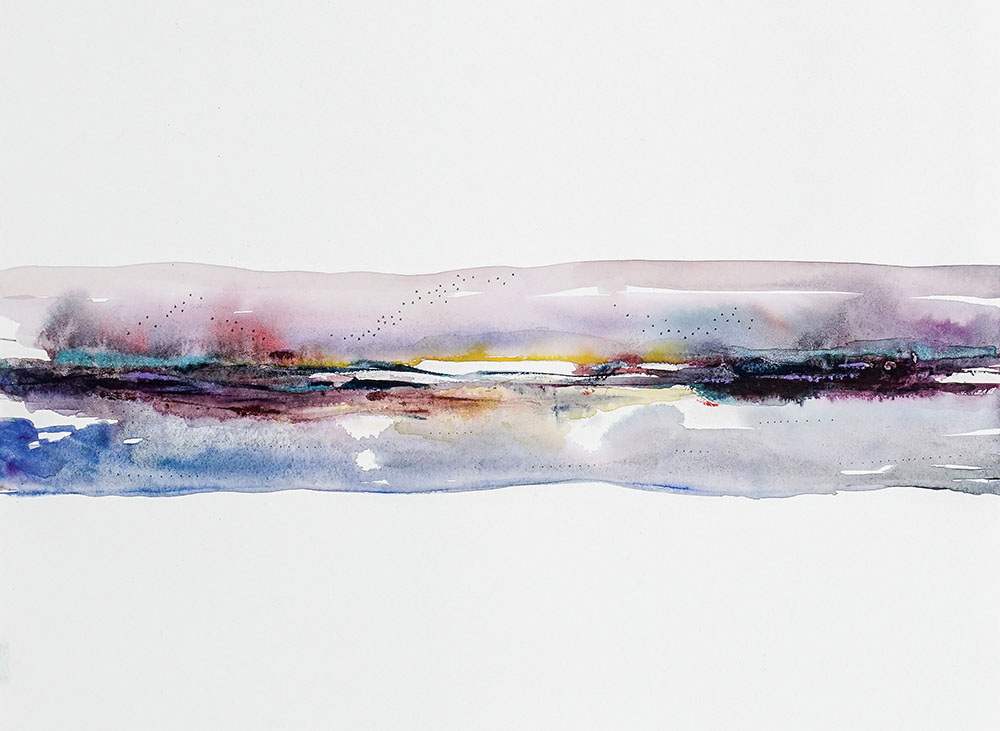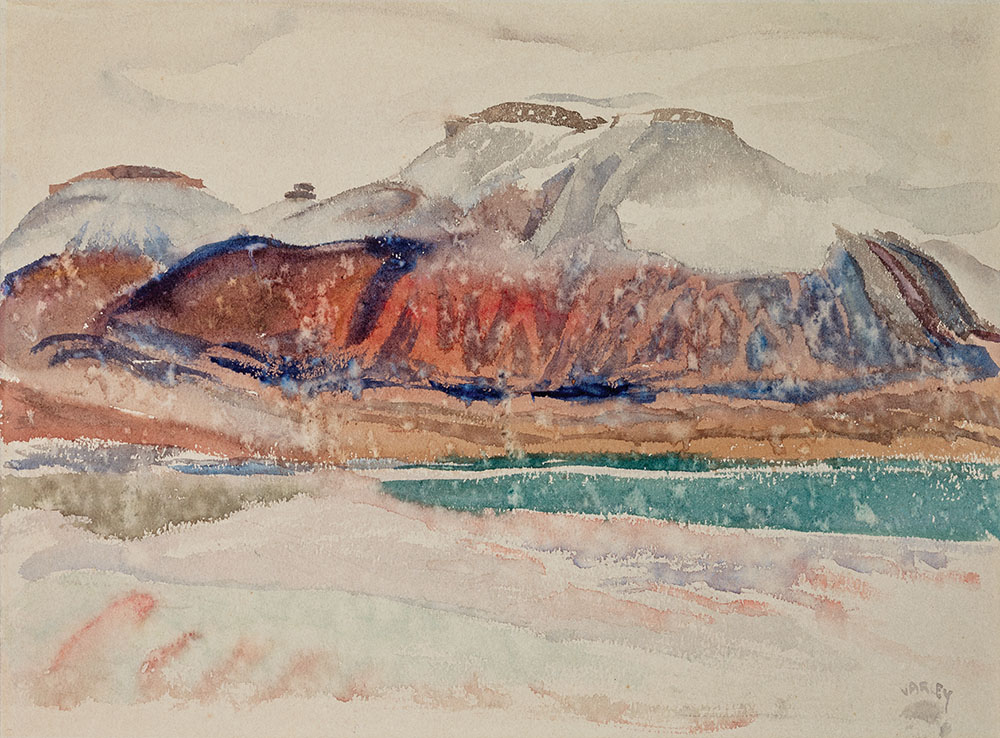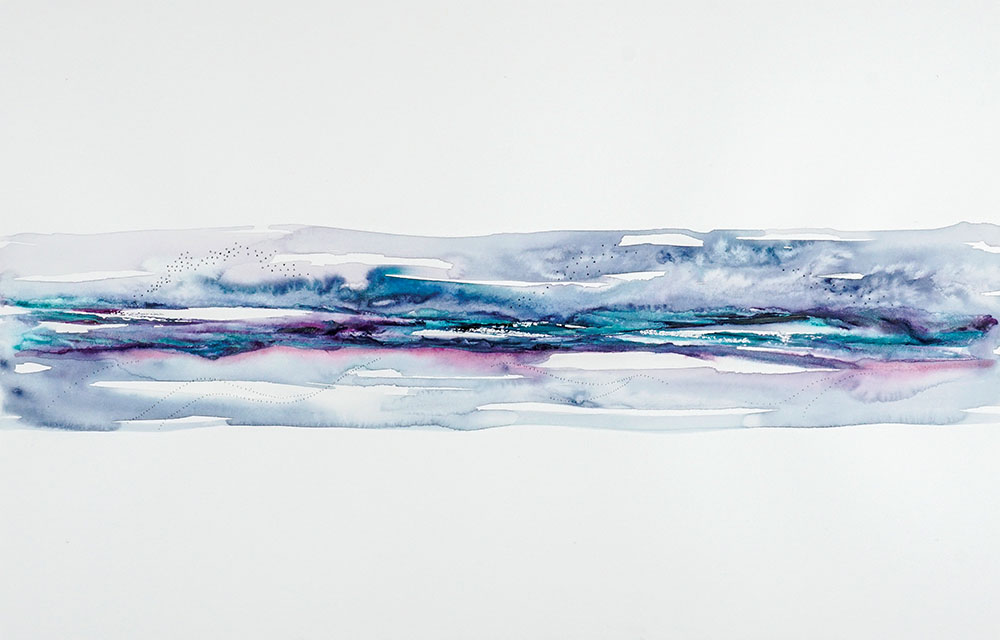A Inuit Art Counternarrative to the Group of Seven's Vision of the Arctic
Inuit Art Foundation | May 12, 2021
Categories: news

For hundreds of years, the Arctic has captivated the imaginations of outsiders—including artists from across Canada, many of whom returned again and again to depictions of tundras and icebergs. But how do these foreign legacies of picturing the Arctic engage with a more local view? Here, a curator considers how new works reveal the Arctic from its true vantage—as home.

In Frederick Varley’s Arctic Sketch II (1938), a green band of colour divides the pale brown stretch of land below and the rising blue-tinged mountain above. Cutting the land almost in two, this shard of water brings life to an otherwise empty coastline. A group of wispy clouds envelop the top half of the painting, and from these, gently falling snow emanates and falls to the ground. The small, white blotches that dot the surface of the watercolour are not effects created by a paint brush, but rather by snowflakes falling on the surface of the paper. In 1938, Varley embarked on a 10,506-mile voyage to the Arctic from Montreal, QC. This two-and-a-half-month journey would see him visit numerous places throughout the North, including Nunatsiavut, Nunavik and Nunavut, as well as Greenland. Inspired in equal measure by the breathtaking landscape of the Arctic and the traditional Inuit ways of life, Varley produced several works over the course of his trip, including drawings, watercolours and oil sketches, many of which were painted en plein air, like Arctic Sketch II.
Painting the Arctic landscape has long fascinated artists from Southern Canada and their paintings have, for the most part, influenced the public’s visual imagination of the North. For more than one hundred years, artists have trekked north, first by boat and now by plane, to reach this isolated region. On paper and canvas, they have recorded their impressions of the land, its geography and its peoples, and producing, among other subjects, luminous paintings of floating icebergs, piercing views of tundra and intimate portraits of Inuit in traditional dress. None of these depictions are more emblematic than those by members of the Group of Seven[1], namely A. Y. Jackson, Lawren Harris and Frederick Varley[2]. Having produced some of Canada’s most iconic landscape paintings of the early twentieth century, the Group of Seven aimed to create a vision of and for Canada based on its vast natural environment. Their paintings of windswept pine trees on rocky outcrops, boreal forests with changing autumn leaves and the play of light on the calm waters of Georgian Bay are but a few examples of the works they painted.

It is understandable, then, that their attention would eventually turn to the North in search of new painting vistas. As Jackson stated before his first voyage, “there is a country to the north of us which is unique and distinctly Canadian. Let our artists turn explorers; let them go up into this territory and interpret it for Canadians”[3]. They weren’t the first, and certainly not the last, but their travels inspired future generations of artists to follow in their footsteps. Consequently, the depiction of the Arctic in paint has, up until now, been mostly from an outsider’s perspective. For reasons explained elsewhere in this issue, including the lack of access to materials, Inuit artists living in the North have not featured prominently within the legacy of painting in
the Arctic and their ability to interpret their own lands in paint has been limited.
Continue reading this article at Inuit Art Foundation.


